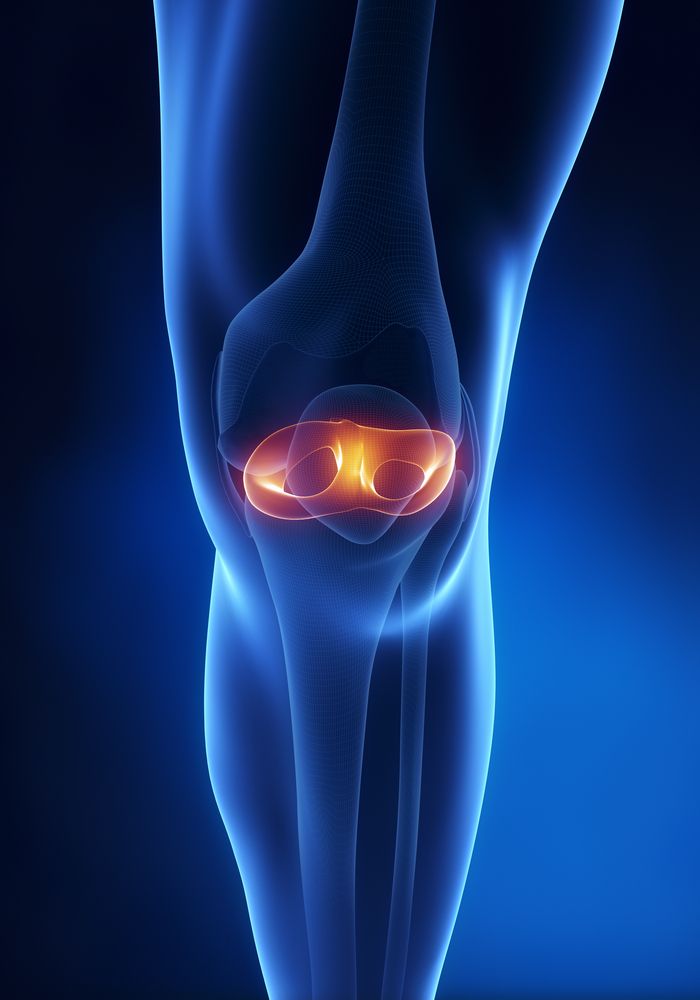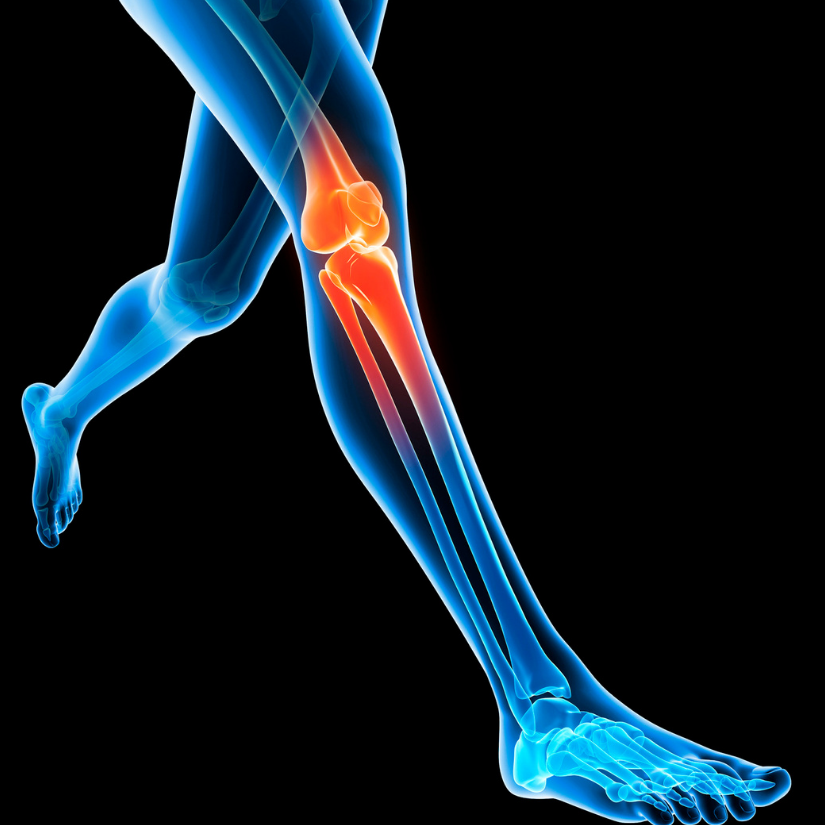Meniscus
What is a Meniscus Tear?
A meniscus tear occurs when this cartilage is damaged. Tears can result from sports injuries, twisting motions, squatting, or even routine activities such as getting up from a chair. Meniscus tears can vary significantly in size, shape, and location, which directly affects symptoms and treatment options.
The meniscus is a C-shaped piece of cartilage in your knee that acts as a shock absorber between the femur (thigh bone) and tibia (shin bone). Each knee has two menisci:
- Medial meniscus (inner side)
- Lateral meniscus (outer side)

TYPES OF MENISCUS TEARS
- Vertical (Longitudinal): A tear along the length of the meniscus, often repairable when located in the vascular (outer) zone.
- Bucket Handle: A large, displaced longitudinal tear where a portion of the meniscus flips into the center of the joint, often causing mechanical symptoms like locking or inability to fully extend the knee.
- Radial: A tear starting from the inner edge and extending outward toward the periphery, disrupting the meniscus’ ability to distribute load effectively across the joint.
- Horizontal: A cleavage tear splitting the meniscus into top and bottom layers; treatment depends on size, location, and symptom severity.
- Complex: A combination of different tear patterns (e.g., horizontal, radial, longitudinal), often making repair more difficult and requiring individualized surgical decision-making.
- Degenerative: Typically seen in older adults, these tears result from gradual cartilage wear and are often managed non-operatively if asymptomatic.
- Root: A detachment of the meniscus from its anchoring point at the tibia, often occurring in patients aged 40–70 years. Root tears are biomechanically equivalent to a complete meniscectomy and are strongly associated with early arthritis, cartilage damage, and bone injury. Surgical repair is generally indicated.
What Is a Meniscal Root Tear? click here to learn more.
Meniscus Blood Supply and Healing Potential
The meniscus has a limited blood supply, which greatly influences its ability to heal after injury.
It is divided into 3 zones:
- Red-Red Zone: The outer third of the meniscus, which has a rich blood supply. Tears in this zone have the highest healing potential and are most likely to be successfully repaired.
- Red-White Zone: The middle third of the meniscus, where blood supply is partial and diminished. Healing here is possible but less reliable than in the outer zone.
- White-White Zone: The inner third of the meniscus, which is avascular (lacking blood supply). Tears in this zone have very poor healing capacity and typically cannot be repaired successfully.

Because of these differences, location of the tear is a critical factor when deciding whether to perform a meniscus repair or a partial meniscectomy.
Special Challenges of Bucket Handle Tears Bucket handle tears represent a complex and serious form of meniscus injury, where a large, displaced fragment of the meniscus flips into the center of the knee joint. These tears are associated with several challenges:
- Mechanical Blockage: The displaced meniscal fragment can cause the knee to physically lock, preventing full extension and often requiring urgent surgical intervention.
- Tear Size and Displacement: Bucket handle tears involve a large portion of the meniscus, making anatomic repair technically more difficult compared to smaller or peripheral tears.
- Higher Repair Failure Rates: Due to the complexity and extent of tissue damage, bucket handle repairs have a higher risk of incomplete healing.
- Tissue Quality: Chronic or long standing bucket handle tears may involve frayed or weakened tissue, reducing the likelihood of a successful repair.
- Increased Risk of Reoperation: These tears have a greater chance of requiring a second surgery if mechanical symptoms persist or healing fails.
- Longer Recovery Time: Rehabilitation following bucket handle repair is typically more prolonged, with extended restrictions on motion and weight-bearing to protect the healing meniscus.
Despite these challenges, preserving the meniscus when feasible remains critical to protect long-term knee function.
Do All Meniscus Tears Require Surgery?
Not all meniscus tears require surgery. Small, stable, or asymptomatic tears can often be managed conservatively with physical therapy, activity modification, and anti-inflammatory strategies.
1. Non-operative management is typically considered when:
- The tear is small and stable
- There are minimal or no mechanical symptoms (e.g., no locking or catching)
- The patient’s activities can be modified without significant limitation
Additionally, orthobiologic therapies, such as Platelet-Rich Plasma (PRP) or Bone Marrow Aspirate Concentrate (BMAC), may help promote healing in selected non-operative cases or as an adjunct to surgical repair.
2. Partial Meniscectomy
When repair isn’t possible, a partial meniscectomy is performed. This involves trimming and removing the damaged portion of the meniscus while leaving as much healthy cartilage as possible.
Benefits of Partial Meniscectomy:
- Shorter recovery: most patients return to regular activity within 4-6 weeks
- Outpatient procedure with minimal downtime
- Pain relief and improved knee mechanics in the short term
Important Considerations:
- Does not restore the full meniscus function
- Increased risk of long-term cartilage wear and arthritis compared to repair
- Best suited for older patients or tears in the inner (non-vascular) zone of the meniscus
3. Meniscal Repair
The meniscus is a vital cartilage structure that cushions the knee, distributes load, and protects joint cartilage. Preserving the meniscus helps prevent long-term degeneration and arthritis. Once removed, it does not grow back.
Whenever possible, Dr. Jazayeri prioritizes repairing the meniscus to restore its function and maintain long-term joint health.
Benefits of Meniscal Repair:
- Maintains knee biomechanics and joint protection
- Reduces long-term risk of arthritis compared to meniscectomy
Important Considerations:
- Best suited for younger patients and tears in the vascular (outer) zone
- Longer recovery time: return to activity may take 3–6 months
- Healing is not guaranteed, even when the tear is repaired
- A second surgery may be needed if the repair does not heal
- Risk of stiffness, swelling, or incomplete healing
Enhancing Healing with Orthobiologics. Because meniscal healing depends on tear location, tissue quality, and patient factors, Dr. Jazayeri may recommend orthobiologic augmentation:
- PRP (Platelet-Rich Plasma): Concentrated platelets from your own blood to support healing
- BMAC (Bone Marrow Aspirate Concentrate): A needle is used to harvest bone marrow from your pelvis, isolating your own stem cells (autologous), which are then applied to the repair site to enhance healing potential
Dr. Jazayeri will discuss whether biologic augmentation is appropriate in your case to maximize the success of the repair.

patient resource
KNEE ARTHROSCOPY POST OPERATIVE PATIENT INSTRUCTIONS CLICK HERE
What to expect with your knee arthroscopy surgery.

evaluation
What Happens Next?
Dr. Jazayeri will evaluate your MRI, knee exam, and overall health to determine the most appropriate treatment. During surgery, the decision to repair or remove part of the meniscus is made based on the appearance and health of the tissue.
Key Takeaway:
- Meniscus Repair is preferred whenever possible and offers long-term protection of the joint, but it requires a longer recovery.
- Partial Meniscectomy provides faster recovery for non-repairable tears but may carry long-term joint health trade-offs.

Contact us
If you have questions or concerns, please don’t hesitate to ask Dr. Jazayeri or the care team: (855) 892-0919
Our goal is to relieve your pain, restore knee function, and help you return to the activities you love, safely and successfully.

